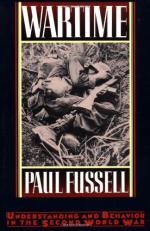
|
| Name: _________________________ | Period: ___________________ |
This test consists of 5 multiple choice questions, 5 short answer questions, and 10 short essay questions.
Multiple Choice Questions
1. The use of meaningless and tedious tasks as hazing would best be described as which of the following?
(a) Constant.
(b) Common.
(c) Uncommon.
(d) Rare.
2. Even with advanced bombsights, bombs would routinely land how far away from their targets?
(a) Hundreds of yards.
(b) Thousands of yards.
(c) Hundreds of feet.
(d) Miles.
3. How did the American media react to the image of many conscripts being drunkards?
(a) They reported it gleefully.
(b) They ignored it.
(c) They tried to counter it.
(d) They tried to cover it up.
4. According to the stereotype about Chinese troops, they could survive indefinitely if provided with what?
(a) Soy bean rations.
(b) Dry noodles.
(c) Dog meat.
(d) A handful of rice a day.
5. Soldiers in their thirties were often called what?
(a) Grizzly.
(b) Old man.
(c) Pop.
(d) Gramps.
Short Answer Questions
1. What types of bombers were believed to be key to the war-effort?
2. The author states that most of the weapons issued to American armed forces suffered from what problems?
3. Which of the following is NOT one of the reasons that armies historically favored younger soldiers?
4. The presentation of the war by state and public media is best described as which of the following?
5. Which of the following is not a concept that the iconic pre-war image in Chapter 1 is said to convey?
Short Essay Questions
1. What types of rumors are sometimes believed by both sides?
2. What writer is a notable exception to the normal treatment of enlisted men, and how did he differ?
3. How did contemporaneous war histories depict military blunders?
4. What problems did American arms and armaments suffer from in the early parts of WWII?
5. Why is purpose difficult to see or non-existent in war?
6. What does the term "chickenshit" mean?
7. What types of hazing were most common?
8. How and why did military and public authorities react to stereotyping of enemy forces?
9. What drinks were preferred by men from different nations in the war?
10. What did Americans expect their participation in WWII to be like?
|
This section contains 551 words (approx. 2 pages at 300 words per page) |

|




